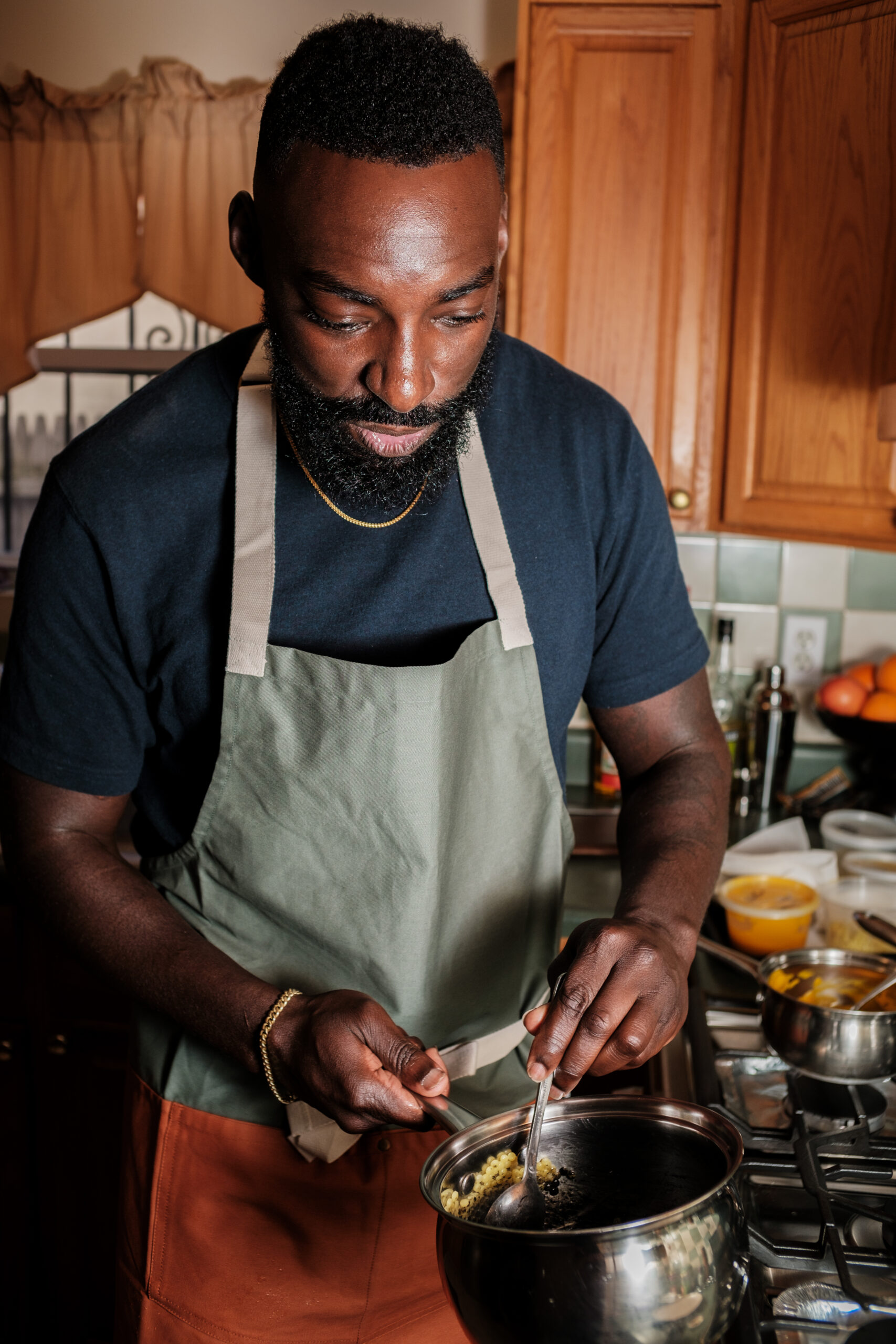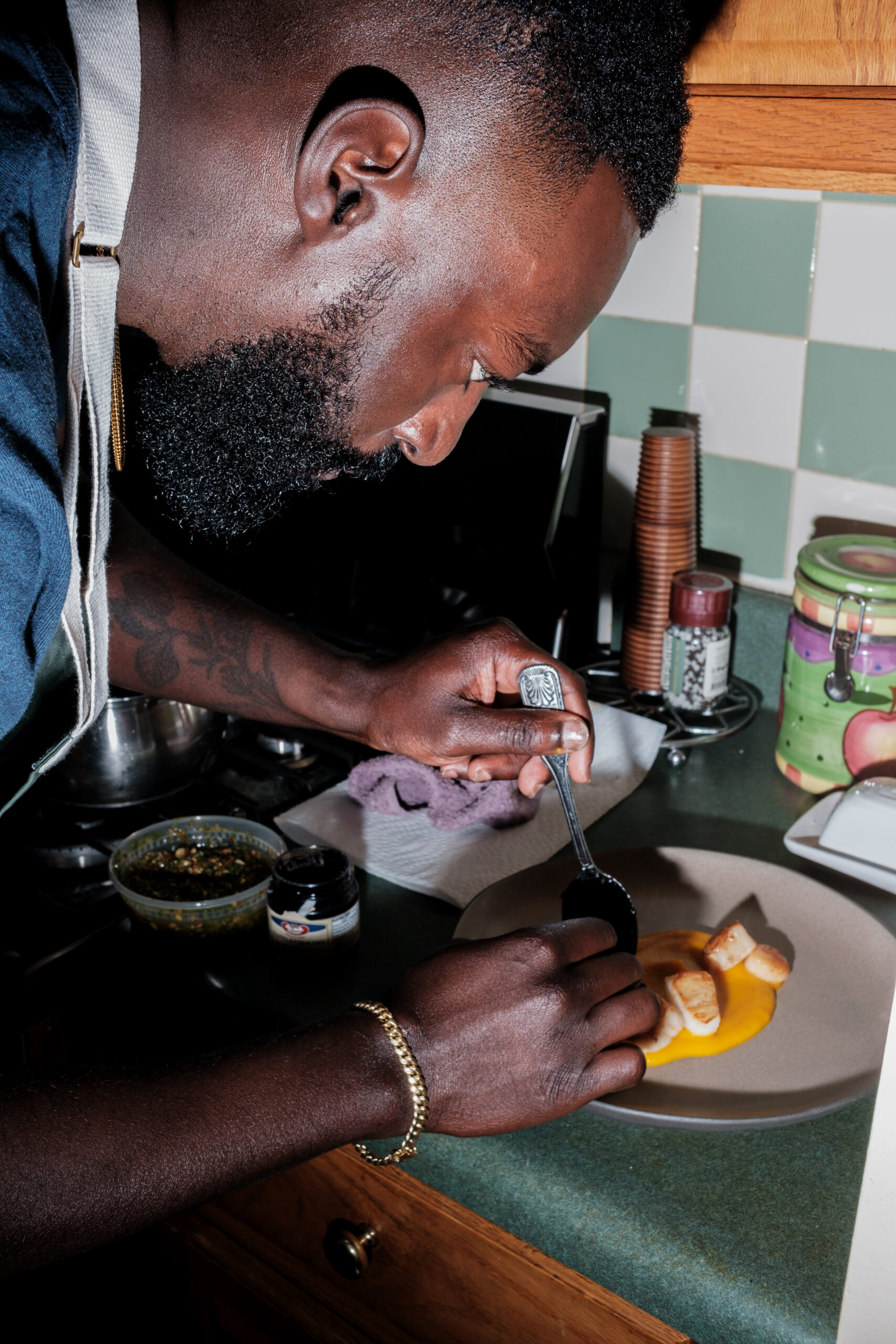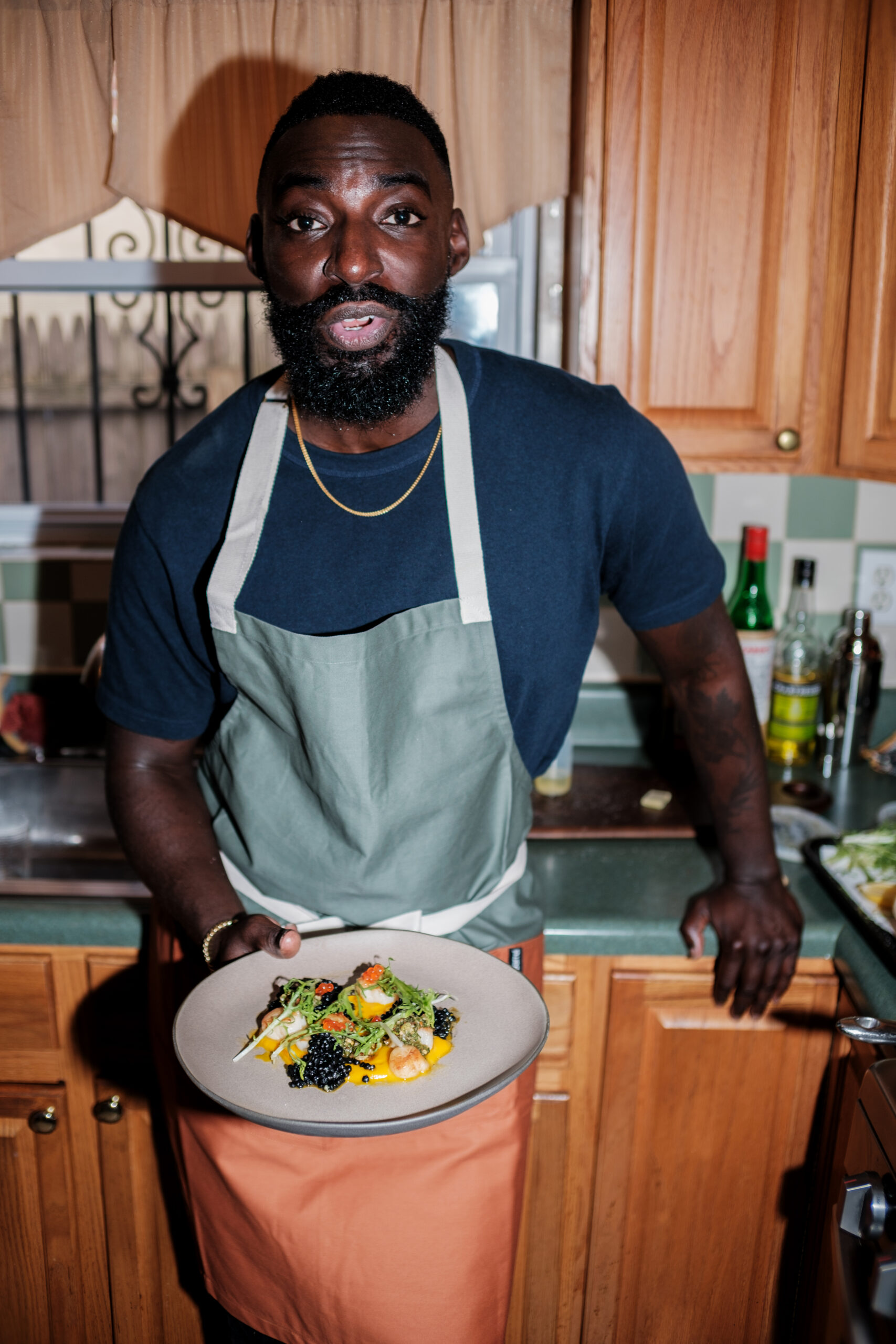Chef Eric Adjepong thinks of his approach to cooking a lot like jazz music. “I know, technically, how to make a great meal: the flavor profiles you need, the textures, the crunch, this, that, and the other,” the former Top Chef finalist and now Wildcard Kitchen host told me when I arrived at his mother’s house in the Bronx earlier this month to watch him work. “At that point, jazz starts happening, because you’re bringing things together that probably don’t really mix, but you have the authority and the finesse and the touch to make it work.” It was apropos, then, that we were in the kitchen where Adjepong, who lived in Ghana from the ages of two to five before returning to the States, spent much of his childhood. Here, he explains, is where he settled on the particular fusion of West Africa and New York that defines his eclectic, flavor-forward food. The other key instrument in the Adjepong jazz band, crucially, is community. “In West African dining culture,” he explains, “I grew up with food at pretty much in every single event, whether it’s milestones, birthdays, funerals. I think that’s the best way to eat, to just have people around.” In that same spirit, the chef invited us to watch him make a plate of scallops and squid ink cous cous, washed down with his signature “Last Word” cocktail.
———
We’re doing a seared scallop with a ginger, garlic-based carrot reduction, almost like a purée. Then we’re adding a little bit of couscous, a little bit of squid ink. This is a dish that speaks to a lot of coastal seafood. I love cooking seafood. I love anything from the sea. It’s not necessarily a West African focused dish, but it’s more about taking a little bit of those flavor profiles that are very familiar to a West African palate, plated up in a way that Westerners can really understand, and digest.
I always like to set up the ingredients I’m working with on my tray like a surgeon. We have a little bit of carrot purée right here that we’ll warm up. The couscous starts to warm that up as well. The purée is more so for the flavor profile. We have a little bit of that ginger garlic purée inside of the carrot purée, spiced with a little bit of coriander. It’s really, really simple; I want it to actually taste like the carrot itself. That’s another thing that’s super important to me—cooking within the season. Right now, we’re obviously in a cold weather month, but things are kind of warming up, and carrots are really delicious around this time of the year. I definitely wanted to highlight that and keep it very seafood forward.
We’ll add the cuttlefish ink into the couscous to first, make it super dramatic and black and dark, and second, to give a nice oceanic, salty profile to the fish. The squid ink accents the scallop, which tastes very buttery, and we’ll have some salmon caviar and some salmon roe as well to really play off of all those sea notes.
We’re in my mother’s kitchen now. The last time I cooked a meal here was two weeks ago. My stepfather passed away last year, so my mom is in a little bit of a transition now. And in the past year, I’ve probably bonded the most that I’ve ever had with her. Now that I’m a parent at age 36, I’m curious to know what life was like for her, especially being an immigrant and coming to a country that essentially is brand new: what’s it like raising a kid in America?
The key to cooking scallops is to dry them and salt them beforehand. You want them dry, and that’s really the case for any sort of protein. You want to try to keep a very dry surface because oil and water don’t mix. If they’re wet, they steam, but we want a nice kind of sear on them. We’ll use a good amount of fat to get them going and then it’s just about letting them do their thing.
Then we have a peanut salsa, which is a condiment I love playing around with. Peanuts, and most ground nuts, are absolutely huge in West African culture. I’m like, how many times can I incorporate that into things that I love? I love salsa, I love condiments. Sauces are my favorite part of a dish. The peanut salsa right here has ground nuts, a little bit of habanero, scotch bonnet—a lot of those spices that I really, really love.
My daughter, Lennox, was a very, very picky eater ironically, to the point that her mom and I brought her to a behavioral food specialist to figure out why she only eats three things every week. I’m trying to cook everything for her and she’s like, “Nah.” But we found out it’s a lot of textures and hot and cold that’s tripping her up. Once we figured that out, it’s become so easy. She eats everything now.
We’re going to just start plating up now. We’ll start off with our carrot puree, nice and warm. The first thing I learned in school is plating. I have a little bit of an artistic eye for that, but the rules of thirds, man: doing things in odd numbers for some reason keeps your eye engaged to the plate. Negative space is important. It’s all the things that you would hear from a painter or an artist.







